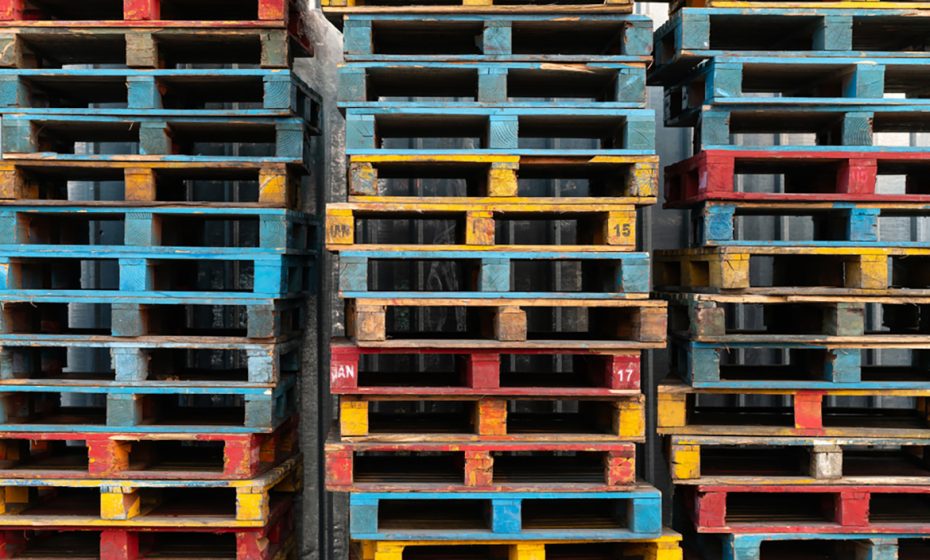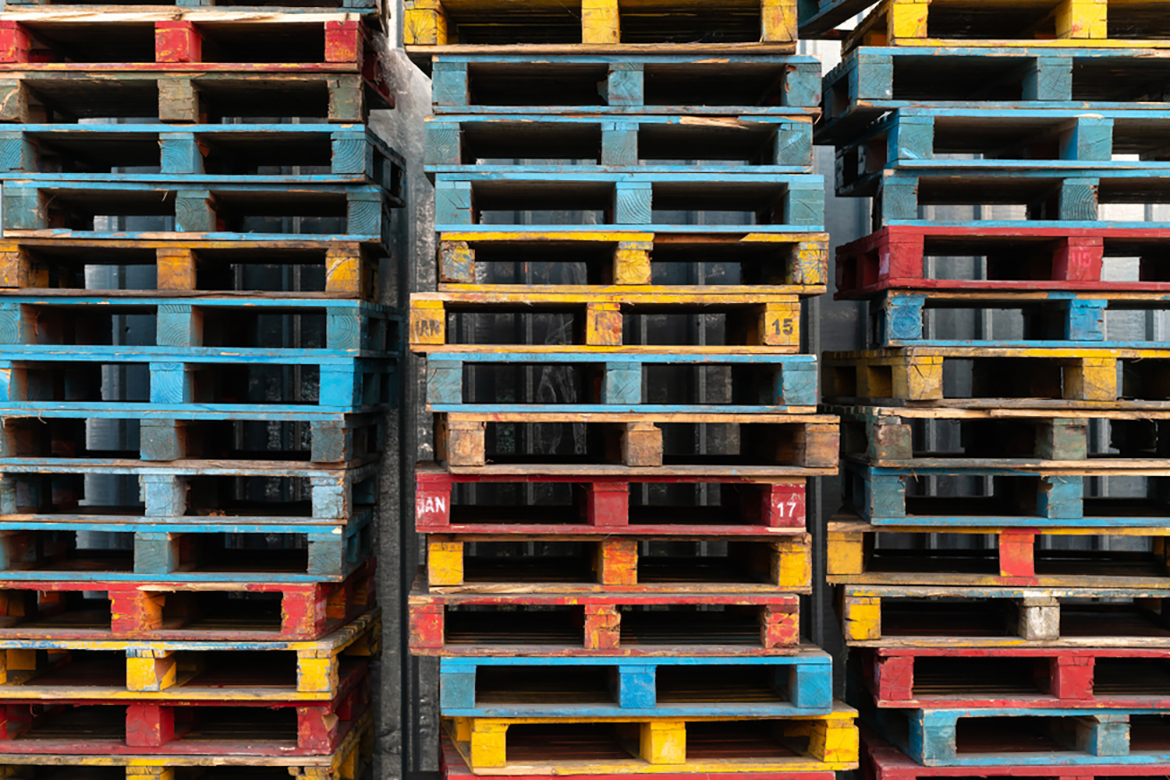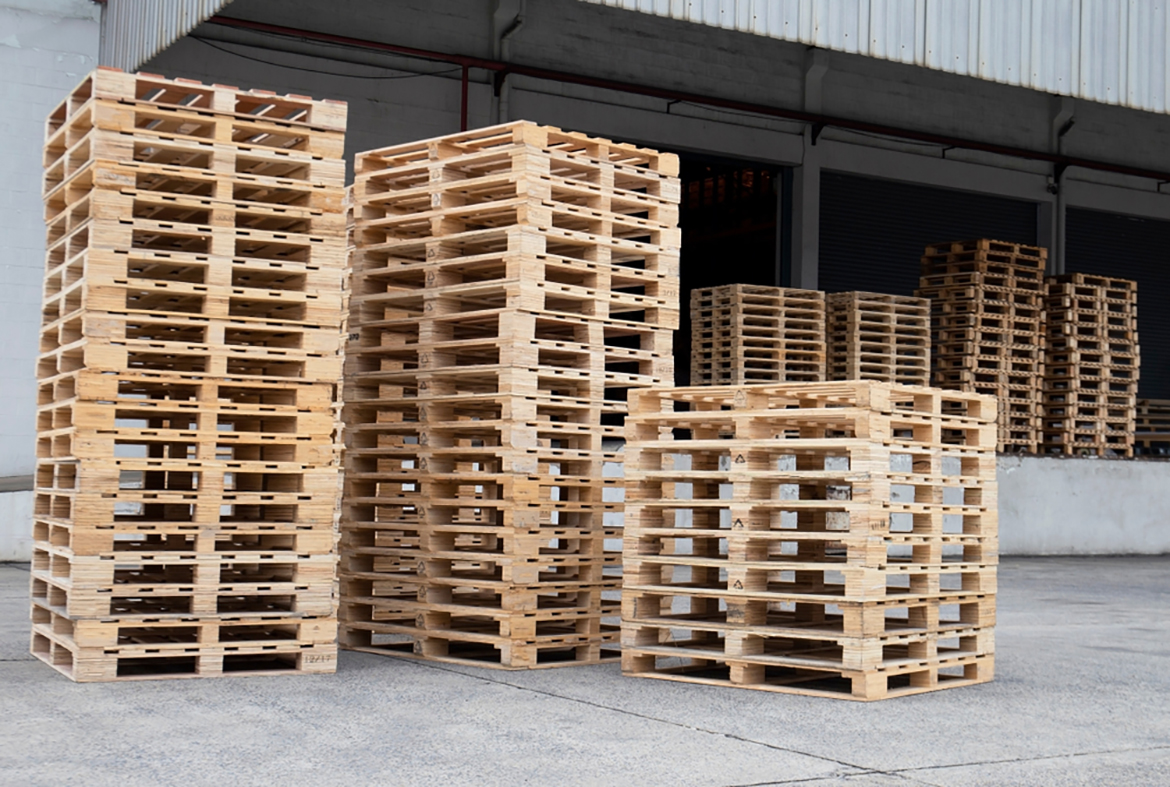Every package needs the right type of pallet. Most companies will choose between plastic pallets and wood pallets when shipping and storing their goods, but this can be a difficult decision to make. Both types of pallets come with their fair share of pros and cons. Consider how often you plan on moving your goods, how they’re being stored and where they’re going when selecting the right pallet for your industry.
Wood Pallets vs. Plastic Pallets: What Are the Differences?
Before you choose a pallet for your industry, you need to understand what separates a wood pallet from a plastic pallet.
The average wood pallet is 48″ x 40″, which is the standard in North America. These pallets are made from wood from a sawmill. The wood is then cut into boards and nailed together. Wooden pallets must also be treated if they are being shipped overseas to prevent the spread of wood-borne pests. The U.S. requires all wood shipping materials to be treated prior to entry. Most wooden pallets are either heat treated or treated with methyl bromide, a pesticide that can cause health issues in humans.
Plastic pallets come in a variety of sizes, including the standard 48″ x 40″. They are made with HDPE (high density polyethylene) and PP (polypropylene) or a mix of recycled HDPE and PP. These products don’t need to be treated for international shipping. They are made by extrusion, thermoforming, blow molding or injection molding. The most common method is structural foam injection molding. Pallets made with thermoplastic add foaming resin to reduce the density of the pallet. If the pallet is made from recycled materials, the plastic will undergo intense heat and pressure before being remade into a pallet.
How to Choose Between the Two
There are several factors to consider when choosing between wood and plastic pallets.
-
Compatibility
You need to make sure the pallet will work with all your different containers. Your containers shouldn’t dent, tear or damage your containers in any way. It’s best to match materials when pairing your containers with a pallet. If you use plastic collapsible containers, pair them with plastic pallets. Use wood pallets for containers made of wood and metal pallets for containers made of metal.
-
Durability
Consider how long your cargo will sit on the pallet. This may be anywhere from a few hours to a few years depending on the nature of your business. The COVID-19 pandemic has made it hard to predict how long your cargo will sit on the shelf or in the dock. You need to make sure the pallet will support your merchandise during this time. Consider the conditions your pallet will face while storing or transporting your goods. If there’s a chance the pallet will get wet, the wood could warp. The pallet shouldn’t decay or fall apart over time. Plastic pallets retain their dimensions and structural integrity in any setting.
If your company handles toxic chemicals, oil or other hazardous materials, they could seep into the wood during a spill. Plastic pallets are easy to clean. You also don’t have to worry about the plastic absorbing these materials.
-
Reusability
While wooden pallets tend to cost less up front compared to plastic pallets, they tend to have a shorter life cycle. The wood will start to chip away over time, which could put your products at risk. You will need to spend more money to replace and repair these pallets over time. Consider investing in plastic pallets to extend the working life of your shipping and storage equipment. You can also buy used plastic pallets to reduce the price tag.
-
Customs and International Shipping
If you are shipping your products overseas, it’s usually best to use plastic pallets, so you don’t have to worry about treating your wood pallets ahead of time. Wood pallets need to be approved before they can pass through customs. This can lead to delays and longer wait times for your customers. Use plastic pallets to keep your pallets moving overseas.
-
Health Issues
Consider the health and safety of your employees when choosing a pallet. Treated wood pallets may contain hazardous chemicals. While the use of methyl bromide has been restricted in recent years, older pallets may still contain these chemicals. Research your wood pallets to find out how they were treated.
The wood may also break apart over time, which can lead to the spread of debris. Your workers may accidentally slip and fall when working around these materials. Dust and other airborne particles can also reduce air quality in your storage facility.
Both kinds of pallets have their benefits, but some pallets work better than others in certain situations. Keep these ideas in mind when shopping for pallets for sale online.



